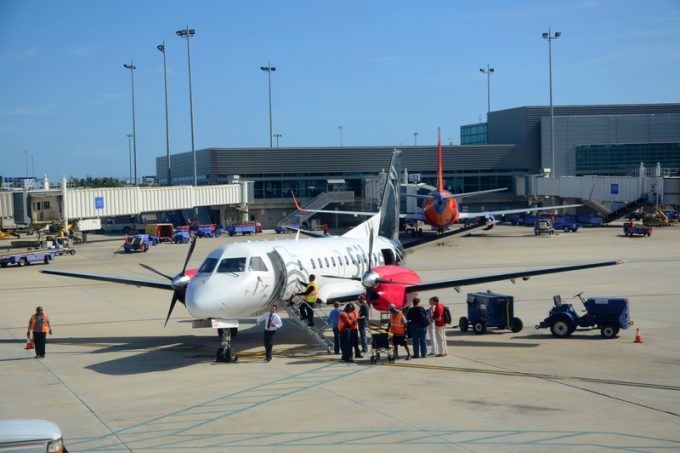Challenges persist, but operators see new freighter finance opportunities
Since Covid, investors have begun to notice freight – but the cost of financing has ...

The dip in demand for air cargo has not slowed requests for regional freighter capacity, according to Pär Gulle, CEO of Taby Air Maintenance (TAM) in Sweden.
TAM is a one-stop shop for SAAB 340 and 2000 variants. He said: “We see a continued high demand for cargo conversions of the SAAB 340, and we have completed three dozen to date, as well as the first SAAB 2000F due for delivery soon.
He anticipates at least 10-12 firm orders for the coming 12 months, based on current negotiations.
“Even though air cargo demand at the moment might be weaker, our view is that the market has always been buoyant, and the current dip is just that, a dip,” said Mr Gulle.
The high-speed regional freighter, developed in close collaboration with launch customer Miami-based Jetstream Aviation Capital, has gained a lot of interest from the market, and Mr Gulle reckons more conversions will follow.
“Our projection is that the market for regional cargo aircraft – feeders – will remain high,” he said.
Data from insight and analytics firm AviationValues shows 162 active SAAB 340s and 62 stored, and there were 76 SAAB 340 transactions since 2020. Jetstream purchased 14 during that period and is the largest purchaser of second-hand SAABs, the data indicated. C&L Aerospace, the second largest buyer, purchased nine 340s during that period.
The market today is for converted 340Bs and, more recently, the 340B+ aircraft, according to a source at AviationValues, who added: “This has occurred in small numbers since 2021 but immediate feedstock is still likely to be the 340B. The 340B+ retains some significant passenger operations in Australia and North America”.
Excitement around air freight has cooled since the peak of the Covid era and supply chain bottlenecks are causing problems throughout the aviation industry after-market.
“We are affected, as most are, but we have so far been able to find alternative suppliers,” said Mr Gulle. He said the lessons learnt included being less dependent on single source suppliers but, where possible, to design certain features from a purely functional point of view, not focusing on brands but on interchangeability.
Industry insiders suggest the biggest challenge right now is to increase production capacity to meet current demand without increasing lead times for conversion slots too much. Additionally different segments of the cargo market will see varying requirements in capacity.
Considering TAM specialises in regional freighter conversions that feed into major hubs, Mr Gulle sees continued high demand for feeder aircraft. He said: “This means prices are going up, and low-hour, late-manufactured aircraft are highly sought after.”
The popular Saab 340 is able to carry a maximum payload of 8,500 lbs, or 1,280 cu ft, of cargo up to 480 nautical miles. Such secondary roles for the type enhance value retention as do OEM maximum take-off weight and a life extension programmes increasing the design life to 90,000 flight cycles. Further support to the longevity of the 340 is provided by the availability of a cockpit avionics display upgrade, aligning the aircraft with new generation air traffic control requirements.
Production of Saab 340s ended in 1999 after 456 aircraft of all variants had been delivered.
Comment on this article